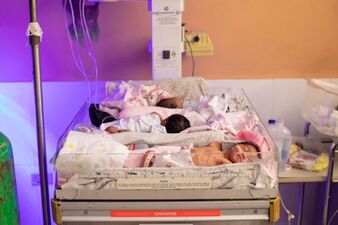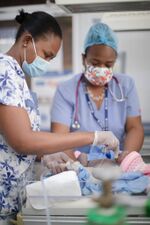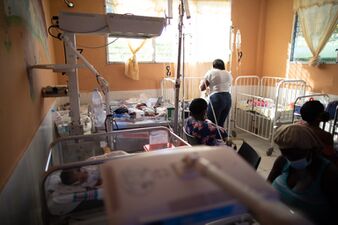Build a new Neonatal Care Unit, Haiti
| Organization | Hope Health Action |
|---|---|
| Region | Haiti |
| Website | Website |
| ProjectLeader | Carwyn Hill |
| Linked Problems & Solutions
|
|---|
HHA's existing Neonatal Unit opened in 2012, able to treat up to 8 unwell babies. It quickly became stretched beyond capacity, regularly caring for 14 babies at a time who are forced to share cots and oxygen. We have now finalised plans to build a new Neonatal Care Unit, with the capacity to accommodate 16 babies, a breastfeeding/family care room, postnatal ward, chapel, training room, staff offices and accommodation. This unit will save the lives of thousands of babies in the years to come.
Challenge
Haiti has the highest rate of infant mortality in the western hemisphere; 48 per 1,000 live births. 1 in 39 babies won't survive their first month and 1 in 29 children will die before their first birthday. A 2012 study states that major causes of infant death are prematurity (34%) and infectious conditions (18%). HHA is passionate about tackling these challenges and believe our new Neonatal Care Unit will provide an excellent foundation to dramatically improve neonatal survival rates.
Long-Term Impact
Alongside infrastructure improvements, HHA will be implementing a range of service improvements to help facilitate improved neonatal outcomes. This will include improved staffing ratios, more focused patient education (for instance on benefits of breastfeeding), more robust and effective data collection and analysis, and increased training and mentorship. This combined approach will directly aid improved patient care and outcomes, helping to save thousands of babies in the years to come.
References
- http://www.hopehealthaction.org
- https://www.hopehealthaction.org/521/New-MaternityNeonatal-Unit
- https://vimeo.com/718776874
Additional Documentation
https://www.globalgiving.org//pfil/55814/projdoc.pdf
Project Gallery



